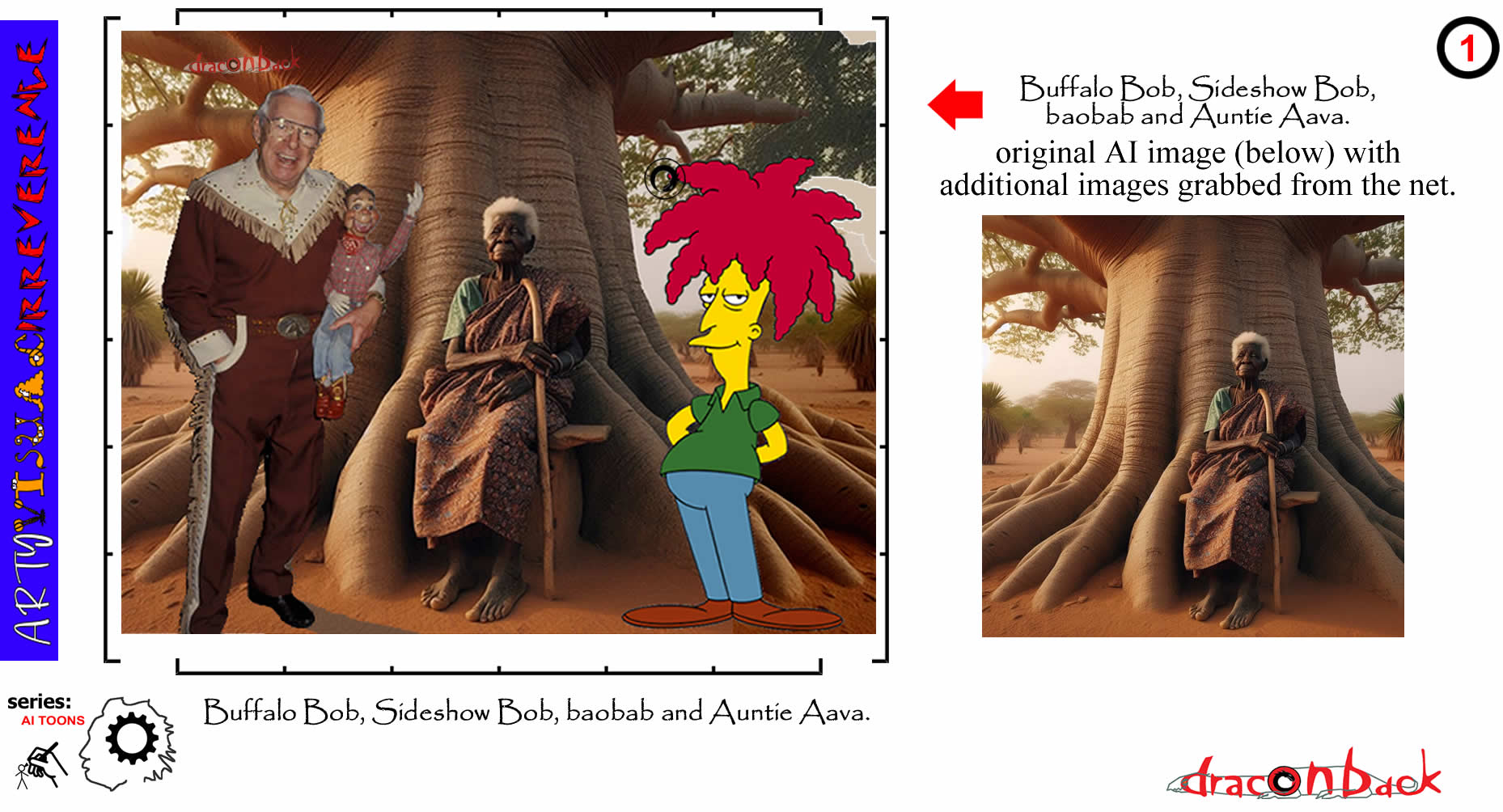
This website features collaborations with AI, usually humourous, that will be accompanied by short related essays intended for smart people.

AI-assisted comic creations by  |
This website features collaborations with AI, usually humourous, that will be accompanied by short related essays intended for smart people.
|
|
|
Auntie Aava was a village elder in Paga, Northern Region Ghana. Buffalo Bob was the host of the popular "Howdy Doody Show" (whose titular character was the marionette he is holding) during the 1950's. Sideshow Bob is a similar, fictional, children's TV entertainer from "The Simpsons" animated series. The image of Auntie Aava and related iterations were generated by Copilot from the description, recounted to me from a loved one, of childhood memories from Ghana of a blind aunt who used to rest under the shade of a baobab tree. In rural northern Ghana, elders play an indispensable role in the care and upbringing of children. They are often seen as the custodians of cultural traditions and values, passing down wisdom and life lessons through storytelling and daily interactions. Elders provide guidance, discipline, and emotional support to children, helping them navigate the complexities of growing up. They also impart practical skills, such as farming techniques and traditional crafts, ensuring that the younger generation remains connected to their heritage. Furthermore, in many extended family structures, elders often take on care-giving responsibilities, especially when parents are busy with work or other obligations. This intergenerational bond fosters a strong sense of community, continuity, and mutual respect, enriching the lives of both the young and the old. The baobab tree, scientifically known as Adansonia digitata, is a remarkable and iconic species found in several African countries, including Ghana. These trees and the related ceiba trees of Central America, are often referred to as the "Tree of Life" due to their numerous uses and cultural significance. They can live for thousands of years, reaching heights of up to 30 metres (98 feet) and trunk diameters of up to 11 metres (36 feet). The baobab's unique shape, with a thick, bulbous trunk and sparse branches, makes it easily recognisable. In Ghana, the baobab tree plays a crucial role in the lives of local communities. Its fruit, known as monkey bread, is rich in vitamin C, antioxidants, and essential minerals, making it a valuable food source. The seeds can be roasted and ground into a nutritious powder, while the leaves are often used in traditional dishes and medicinal remedies. The tree's bark is also highly prized for its fibre, which is used to make ropes, mats, and clothing. In addition to its practical uses, the baobab tree holds deep cultural and spiritual significance. Many communities in Ghana consider the tree sacred and believe it possesses protective and healing properties. It is often the focal point of local folklore and rituals, symbolising wisdom, strength, and resilience. Baobab trees are also often focal points for social activities as their broad, buttressed trunks provide shady alcoves in which respite from the heat can be sought for chatting or shelling a crop of groundnuts (peanuts). Furthermore, the baobab tree contributes to environmental sustainability. Its extensive root system helps to prevent soil erosion, and it can store large amounts of water, providing a vital resource during drought periods. The tree also supports biodiversity, offering habitat and food for various animals, insects, and birds. Bees will frequently build exposed nests in the trees several metres above the ground, where buttresses join the trunk.
Here's the ink drawing I did using the images I generated as reference material:
Here are other versions of AI-generated images from the same prompt:
|
||||||||||||||||
 |
 |